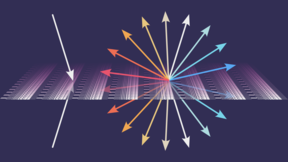Public defence in Radio Engineering, M.Sc. Francisco Cuesta Soto

When
Where
Event language(s)
The title of the thesis: Theory and applications of coherently-illuminated metasurfaces
Doctoral student: Francisco Cuesta Soto
Opponent: Dr. Iñigo Liberal, Public University of Navarra (UPNA), Spain
Custos: Prof. Sergei Tretyakov, Aalto University School of Electrical Engineering, Department of Electronics and Nanoengineering
The fundamental charm of metamaterials and metasurfaces is their capability to control the properties of the electromagnetic waves across them. Thanks to metamaterial’s philosophy, radio engineers and opticians are no more restricted to the properties of well-known materials to develop new concepts and applications. In most cases, the design of a metasurface considers that it’ll illuminated by a single source. However, some applications would require a metasurface with a complex architecture difficult to implement and fabricate. As an alternative, the metasurface could have a simpler design by being illuminated with more than one source.
The findings of this dissertation consider that approach, where the metasurface is illuminated by the combination of two or more illuminating sources, related between each other. Such set of sources can be created artificially using an external secondary source or by splitting a single source with mirrors. Alternatively, coherent illumination can be achieved using the standing waves inside a resonant structure or the electromagnetic waves travelling through a waveguide. Some features of coherently-illuminated metasurfaces can be used for field-enhancement, sensing, interferometry, and filtering.
The presented dissertation aims to introduce the concepts required to understand metasurfaces and coherent illumination. For instance, the metasurface is modeled as a device with multiple input and output signals. After that, coherent illumination is presented using a uniform metasurface, where the electromagnetic waves radiating away from the metasurface are a combination of the incident sources. In the case of spatially-variant metasurfaces, the output waves would not only depend on the intensity of the input sources but also on their angles of incidence. As a result, the combination of coherent illumination and spatially-variant metasurfaces provides more flexibility in the radiation pattern design of the metasurface itself.
Thesis available for public display 10 days prior to the defence at: https://aaltodoc.aalto.fi/doc_public/eonly/riiputus/
Contact information:
| [email protected] | |
| Mobile | +358449210799 |
Doctoral theses in the School of Electrical Engineering: https://aaltodoc.aalto.fi/handle/123456789/53
- Published:
- Updated: